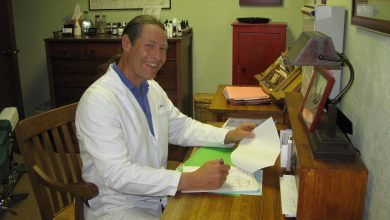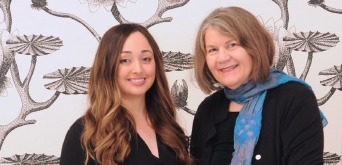Delaine Due, Art Therapist, Cancer Support Group & Individual Counseling
Art therapy is serious business–you must have a Masters degree in psychology and art therapy, including extensive supervised post-graduate clinical work in the use of art psychotherapy. Art therapy won’t focus on teaching you to sculpt or paint or draw. It will, however, focus on helping you address emotional challenges without relying on verbalization as the primary method of healing. Art therapy offers a very challenging and rewarding personal growth opportunity, and with the proper support and guidance one can achieve long lasting changes and benefits.
“Trauma and emotional pain can often be beyond words,” explains Delaine. “No art experience or skill is necessary to take advantage of this way of allowing the unconscious to speak to the self and heal.” Working with individuals as well as groups, Delaine Due facilitates healing through both individual counseling and group counseling work. We caught up with her to learn more about her work and continued outreach into our community.
Hi Delaine, thanks for speaking with us today. Please catch us up-to-date on what you have been up to and how your work has been going?
It’s been a busy year for People’s Art. I’ve been practicing as a professional art therapist for over 15 years throughout the Rogue Valley: working in various settings like adolescent residential treatment, community-based agencies, public schools, Oregon Youth Authority, and private practice.
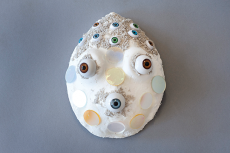 As you mention above, you have been working in Ashland and Southern Oregon for the past 15 years. How has your practice and community outreach evolved?
As you mention above, you have been working in Ashland and Southern Oregon for the past 15 years. How has your practice and community outreach evolved?
When I first moved to Southern Oregon and looked for a job as an art therapist, even the counseling community didn’t understand what that meant. I would say, “I’m an art therapist.” And, they would say, “no, we don’t have any positions open for an art therapist.” I learned to focus on the Master’s in Psychology that every job posting required. Once I got in with my degree, I would do art therapy with clients anyway I could, sometimes in a closet or hallway of a school or treatment center. I even carried a set of oil pastels and a lump of Sculpey with me when I worked crisis with Jackson County years ago.
Two years ago, I relaunched People’s Art and began writing small grants as a way to provide art therapy where I could not get programs started. This let me provide the service and educate clients, agencies, and the community. I offered short workshops through the Ashland Art Center and developed a fun monthly event with Marla Estes (The School of the Examined Life) called Saturday Night at the Movies. Today, it is much more common for people to search for art therapy and to have a more accurate idea of the practice before they call us. In the last year, the business has grown to include work with cancer survivors, people in addiction recovery, elders with cognitive decline, and veterans with PTSD and/or TBI. A couple of organizations that started with one art therapy group have expanded the service by creating a second group.
What would you identify as being key catalyst for these changes that you mention?
First hand experience of clients is probably the main reason for the growth. And, some brave clients have been willing to attend art therapy exhibits, speak to other providers about their experience, and encourage other people in their particular program to attend a group.
There has also been an increase recently in national exposure. Walter Reed Hospital for veterans has an art therapy program. Their work with masks was explored in a recent National Geographic magazine article and I was able to reference this example when writing a grant for the local veterans group. Also, of course there’s good old-fashioned outreach such as letter writing, in-services, tabling at events related to mental health, and many one-on-one conversations.
 Would you say that Art therapy is simply becoming more culturally accepted and maybe even becoming a popular form of therapy?
Would you say that Art therapy is simply becoming more culturally accepted and maybe even becoming a popular form of therapy?
I hope so. When I started working years ago, it was common for someone to think that I fixed bad paintings or only worked with angry artists. Those questions have vanished. Now, many people have heard of art therapy and are familiar enough with the concept to ask how it works. People do still assume I work with children, which I don’t. My specialty is adolescents and adults, trauma and anxiety. I am beginning to bring in another art therapist, however, who does specialize in working with children and families. I’m excited for People’s Art to be able to fill that need more in this next year.
If I understand correctly you are now board certified in Art Therapy… what’s next?
Yes – And I am now studying for an Oregon state license. Oregon legislation does not currently recognize my Board Certification (national), so I have spent the last year applying for the Oregon state license. When I complete the state license, I’ll work on finishing the CDAC (Certified Drug and Alcohol Counselor). I’m going to have an awful lot of letters after my name that few people will know how to read!
 Your business People’s Art has really spread out across the community. Please tell us more about the different services you are offering.
Your business People’s Art has really spread out across the community. Please tell us more about the different services you are offering.
We now have upwards of six groups that I run in the community. There are four groups for addiction and trauma a week in Ashland. In Medford, there are two groups at the Rogue Valley Manor. Providence Foundation also supports a group for cancer survivors. This group is at no cost to clients and is open to any cancer survivor from the first moment of diagnosis to any amount of time being cancer-free. This group is an open therapeutic studio group so some of the personal images that are made may be worked on for weeks or months. Most art therapy groups or sessions involve about 20-30 minutes of image making and then verbal process with the imagery. Anyone can apply to be in the Cancer Survivors Group (no art experience necessary). The application is online at our website: www.PeoplesArt.net
What are some changes you see art therapy making for your clients?
The feedback I hear from clients is generally about the power of insight they gain by looking at a personal issue in a different way. Something as seemingly simple as the process of making a stick figure in a particular situation can allow the person to see a dynamic they couldn’t see before. Authentic images reflect the experience of the person who made them even if they aren’t conscious of the dynamic yet. For example, the size of a figure in relationship to an obstacle or an environment can be surprising. I often hear, “Ah-ha! That’s [my inner child, my father, my mother]!” In this way, it is common for the art therapy process to reveal connections and unconscious material quickly. Defense mechanisms don’t operate as well in imagery as they do in words.
Another common experience of clients is the chance to change an image and see what it’s like to cut the figure free from a burden, remove an oppressive part of the image, open the door of a cage, or add a life raft to the image for a figure. When the person makes the change in the image, they get a chance to symbolically experience the change to a freer, safer, or more hopeful sensation.
It also feels good to get the uncomfortable thoughts, feelings and sensations out onto something concrete. The anxiety I feel inside and have difficulty describing can be taken out and seen apart from me. And, someone else can verify that they see it on the paper too. Whew!
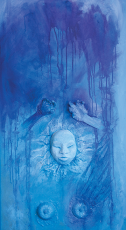 Can you share some samples of work and process with us?
Can you share some samples of work and process with us?
Yes. All the images in this article are from clients who have given their consent to share a bit of their process.
Other than the LocalsGuide, how are your clients going about finding you?
Word of mouth by people who are in sessions telling their friends is one way. Many people find us on Psychology Today’s website for individual sessions. Doctors and rehabilitation specialists are referring people who are dealing with cancer.
What are some of the qualifications required of an experienced art therapist?
An art therapist must have a Master’s level education the field and supervised experience hours. Once an art therapist is registered with the American Art Therapy Association, they can sit for the Board Certification exam. That exam, was, by far, the hardest one I’ve ever taken!
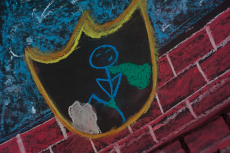 This is pretty advanced… you’re not just sitting around and drawing pictures in a coloring book.
This is pretty advanced… you’re not just sitting around and drawing pictures in a coloring book.
Yes – Art therapists are specialized and it takes a lot of training. Art therapy is a psychology discipline so the primary focus is treatment to help the client or patient achieve their personal goals. All of the art and verbal interventions are done to promote healing. The recent adult coloring book craze is a wonderful pastime for some. Like any hobby, it may provide relaxation that is very healthy. However, its purpose is not to promote insight into relationship dynamics or to assist in medical decision-making or resolve past traumas.
So when you are looking for art therapist here are some questions you should be asking: What art therapy master’s program did you graduate from? What is your philosophy in counseling (Jungian, person-centered, brief solution-focused…)? What does a typical session look like? What experience do you have with (trauma, child abuse, chronic pain…)? With the exception of finding out if they have the Master’s degree from an art therapy graduate program, these are the same questions you would want to ask any therapist. If the therapist has ATR or ATR-BC after their name, then you can trust they have the education and credentials for the art therapy piece.
Many clients report that art therapy is very hard personal growth work.
I’m chuckling. I wish you could hear some of our clients describe their own experiences with art therapy. One of the addiction recovery groups described it as the hardest work and their favorite. What a compliment!
Part of this dynamic is seeing my own dynamics reflected so immediately back to me in an image that I created. It’s very difficult to weasel out of responsibility for my experience when I just proved it to myself. I’ve seen denial in the process of art therapy, but it’s much harder to maintain. And group process is a fantastic reinforcer for this. If I thought the way I see the situation was the correct way to see it, hearing six other people describe their response to the same image is a powerful way to gain flexibility and insight.
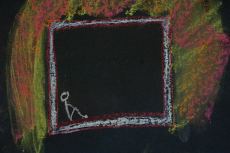 What are some of the key topics you are assisting your clients with?
What are some of the key topics you are assisting your clients with?
Well, aside from the obvious topics of current groups and my specialty in trauma, anxiety, and gender identity; the main topics of therapy are the relationship I have within myself and how that relationship is connected to all other relationships. Everyone has a superego (inner critic) and some of those internal voices are so cruel. You know, the voice that tells you “you’re not good enough.” Secondly, is the topic of how to relate to others in a way that allows me to be my own person and experience positive connection. It seems issues of trust are pervasive in this work–trusting self, trusting others.
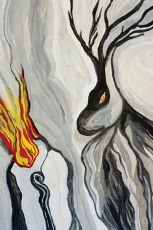 Delaine you also facilitate several art therapy groups. One group that we wanted to make sure to address is your Cancer Support Group.
Delaine you also facilitate several art therapy groups. One group that we wanted to make sure to address is your Cancer Support Group.
Yes. As mentioned earlier, this group is an open group so new members are welcome any time. It is funded by Providence Foundation, grants and donations and there is no cost to members. I asked Katie Shepard, the executive director of the foundation to add her two cents here. “Providence Community Health Foundation has been a proud supporter of the medical art therapy at our own Cancer Center for the past two years. It is a direct way for our donors to make a powerful impact for those patients battling cancer. The secret to the success of this group is in Delaine, the therapist, because this is not an art class. Delaine has a way with our patients that not only creates a safe environment to explore physical and emotional feelings, but she challenges them to go deeper and explore further. It is therapy. And it happens to include art as the mechanism to express things words cannot.
Our patients are fortunate to have this option during and after treatment, but we would love to see this service grow!”
People can be newly diagnosed or cancer-free. It’s simple to apply by filling out the online form on our website: www.PeoplesArt.net. Look under Groups or Events. After you fill out the application, we’ll talk by phone to make sure the group is a good fit for your needs. And, of course, we love stick figures and scribbles so everything you knew about art by the time you were 6 years old is all the qualification you need.
Learn More:
People’s Art Creative Arts Therapies
Medford and Ashland
www.PeoplesArt.net
541-499-5214


